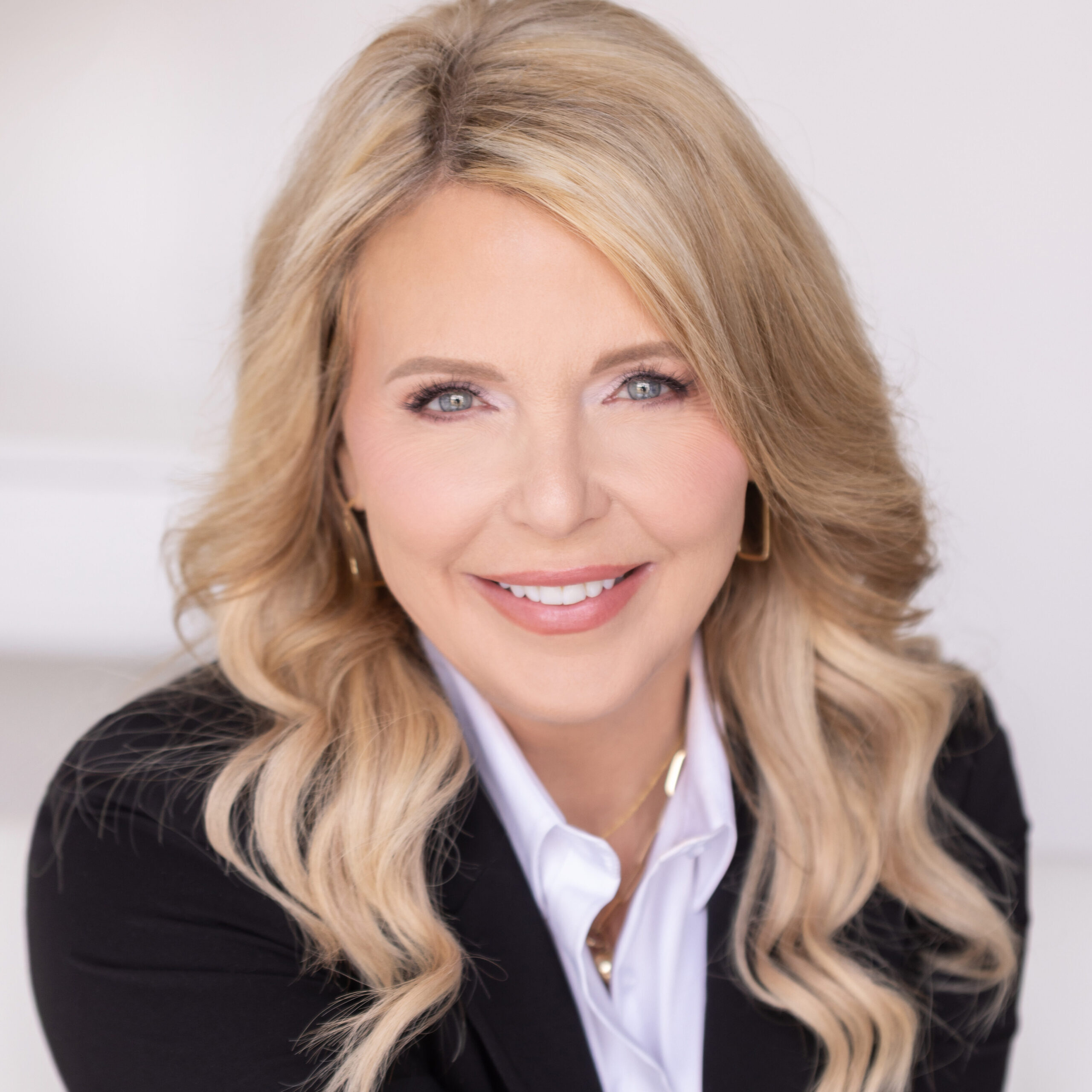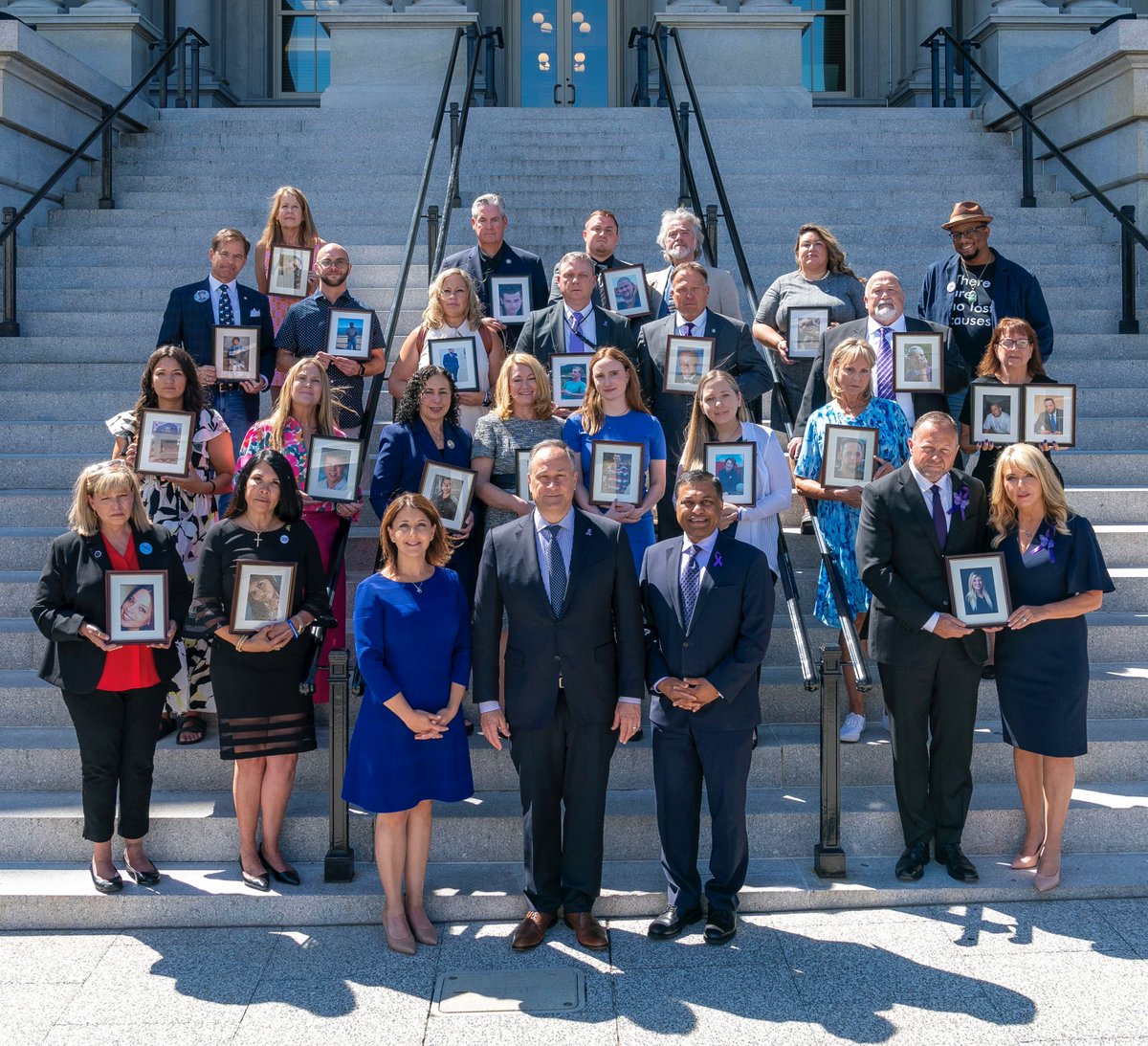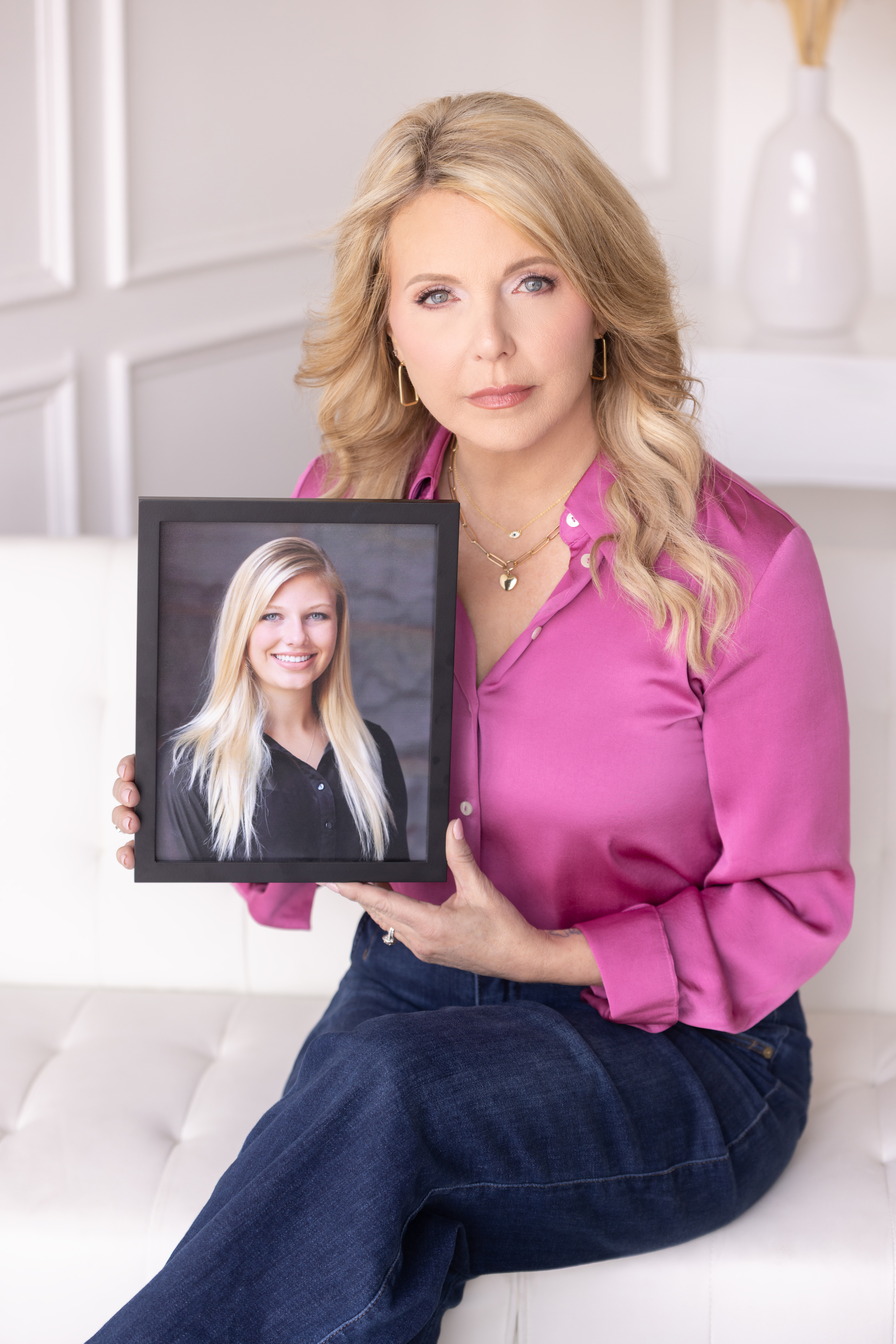What do I wear to the White House? That was actually the first thought that popped into my head after receiving an invitation from the woman in charge of “public engagement” at the White House Office of National Drug Control Policy (ONDCP). As exciting and unique as this opportunity was, my second thought centered on the tragic reason behind my invitation. All my work today stems from the most painful moment of my life—the fentanyl poisoning death of my daughter, Emily. Despite this darkness, I know that what I am doing is the most meaningful action I could be taking: leveraging my family’s tragedy to create change and hopefully save lives in the process.
Regarding my first question, my initial search was for a purple dress, symbolic of International Overdose Awareness Day, the reason for the invitation. When that proved elusive, I settled for navy blue, eventually narrowing down my options to one dress with the help of some girlfriends. I decided to wear a purple ribbon and butterfly pin as my tribute for the day. I was also grateful that my husband, Jeff, who volunteers tirelessly behind the scenes for our charity, would accompany me.

Air travel is seldom smooth, and our trip to D.C. had its share of stress and delays. I was eager to arrive before 5 p.m. to visit my contact at the ONDCP, Cody Nagle, and deliver some of our Emily’s Hope Substance Use Prevention Elementary Curriculum materials. Prevention, I firmly believe, is vital in ending the overdose epidemic. When we met, Cody hugged me right away. She’s exactly the right person for the job. Cody, in recovery from substance use disorder, was a former heroin user. Her opioid use was more than a decade ago, before anyone had ever heard the term, “fentanyl.” In recovery, Cody went on to earn a law degree and now works in the highest office in the land. It’s the kind of amazing life turnaround story that is always possible, but that so many are denied today because of the sinister killer lurking in the illicit drug supply.

The next day, August 31st, International Overdose Awareness Day, my husband and I put on our purple butterfly ribbons and headed to the White House complex. We went through security and found our way to the meeting room, where we were joined by about 30 other loved ones who’d lost someone to overdose/fentanyl poisoning. These were people from all over the nation. Many had lost a child; others a parent or a sibling, aunt or uncle—all were doing advocacy work to try to end stigma and help prevent deaths, just like me. I walked up to my assigned seat where there was a framed photo of Emily. It brought back into focus the reason I was here and my eyes began to well up with tears. I am not here because of my accomplishments. I am here because I too, like so many others, lost a child to this horrible scourge. I am not special. I am just one of hundreds of thousands of us, trying to make sense of the world in the aftermath of loss.

With a deep breath, I sat down and listened to the stories of the other family members seated at our table. I also told them mine. We also had two members from the ONDCP seated with us, as well as a woman who worked for the CDC. We had a pretty good dialog about what needs to be done and we learned from each other. One of the ONDCP staff told us he’d been to China and India several times and had traveled to Mexico more than a dozen times. We talked about how this is a complex problem that is not just a border issue, but a big business issue. The illicit drug trade is a business worth billions and while fentanyl-laced drugs are smuggled across the border, they are also coming in via ships and planes. This is an international problem that must be fought on many fronts.

We heard from the Director of the ONDCP, Dr. Rahul Gupta, also known as the nation’s drug czar. The new director of the Centers for Disease Control, Dr. Mindy Cohen spoke, as well as the Second Gentleman, Douglas Emhoff, who is married to Vice President Kamala Harris.
“It doesn’t matter if you live in a red state or a blue state, families across the country continue to be affected in devastating ways.
As a father, I know how much we worry about our young people and their exposure to dangerous substances.
And with the growth of social media, it’s even harder to protect our children from these harmful drugs.
That’s why the work each of you are doing to raise awareness is so critical.
You are bringing the conversation to the forefront.
You are leading information campaigns in communities to bolster prevention. And you are helping families access the critical treatment and recovery services they need.
Your work is saving lives.”
Douglas Emhoff, Second Gentleman
The White House and CDC each announced more funding to combat the problem, for a total of three-quarters of a billion dollars. I want to see that money go where it is needed most, to local communities and organizations who are boots on the ground, doing the work to educate, prevent and treat the problem. Time will tell if that happens. Following their remarks, the speakers stopped at each table to meet the various family members. Then we headed outside to take a photo on the steps, as we held up the framed pictures of our loved ones. It felt surreal to think that this is where this twisted journey has taken me, to steps outside of the West Wing, clutching a photograph of my daughter, wondering if it were just a political prop or a read conduit for change. My hope is always on the latter, but I’m not naive enough to not consider the first option.

After the photo op, I was whisked over to “Pebble Beach,” a spot off the driveway near the West Wing where television reporters conduct interviews and shoot their standups. As a journalist, it was a little thrilling for me to be in this exclusive area where few people ever have access. I was interviewed by a couple of media conglomerates about the event and then the day was over. We walked toward the gate, turned in our badges, and back out into the streets of DC. A day I anticipated for a few weeks was over in what seemed like a matter of minutes. Would my daughter’s life and death have made any difference at all? Did it even matter what I wore to the White House?
The answer to the second question is of course, “no.” But the first? I sincerely hope that those who make up the bureaucracy in Washington realize the depths of the pain and anguish the overdose epidemic has wreaked upon so many families across the nation. I hope they know that the deaths of so many young people are a huge loss to the future potential of our society—people who could have ended up never using a substance again, maybe even going to law school and getting a job in the White House.

Before I left D.C., I stopped by “The Faces of Fentanyl” wall at the Drug Enforcement Administration. It was closed, but after I told a kind security guard that my daughter was on the wall, he got permission to let us in for a few minutes. I found Emily’s photo almost immediately, which was surprising since at least six walls were lined with images of those who have died of fentanyl poisoning. Almost all were young, and there were many beautiful young women, just like Emily. There were also children and babies on the wall. The security guard told me these photos represented just two percent of the photos the DEA had acquired and that others were displayed in different buildings. And those are just the photos they have; so many other faces and names will never be shown or spoken. With well over a million people dying since the turn of the century due to “overdose” we know who the villains are: from the Saclklers of the world to the Chinese manufacturers to the Mexican Cartels to the American citizens to continue to sell their deadly products to fellow Americans.
Now the question remains, What are we really going to do about it?









Faith, Hope & Courage,
Angela



Leave a Reply